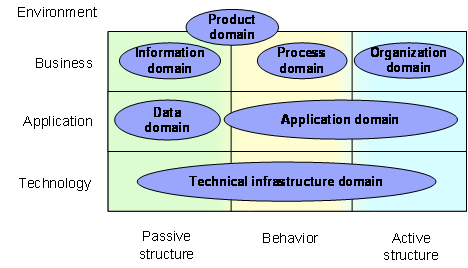Question that I get during Systems Federation and Integraiton chat session (http://ontolog.cim3.net/cgi-bin/wiki.pl?ConferenceCall_2012_03_01).
JamesOdell: So, is Anatoly saying that the "corporate cyborg" is agent based?
1. Role of software in complex systems is prevailing. Now it is better to say that hardware is embedded in software because behavior of a system defined not a merely physic laws but mainly by software program that govern system. There exist term “cyber-physical system” (http://ontolog.cim3.net/cgi-bin/wiki.pl?ConferenceCall_2012_03_01). Software engineers also understand that software always work in environment of some real life (not information only) system.
This trend was reflected both in systems engineering and software engineering communities and there was joint decision to include systems engineering discipline to curriculum of software engineering (http://www.computer.org/portal/web/swebok) and vice versa (http://www.bkcase.org/). There was many talks on this topics but it seems that there was not including by reference but convergence of systems terminology and practices instead (“configuration management”, “integration”, etc.).
2. Usually there are no mention of integration of software and people. E.g. SWEBOK draft state «3.8 Integration. A key activity during construction is the integration of separately constructed routines, classes, components, and subsystems into a single system. In addition, particular software system may need to be integrated with other software or hardware systems». No mention that exist something that need to be integrated except software and hardware. ISO 15288 at least have notions of people: «5.2.1. A system progresses through its life cycle as the result of actions, performed and managed by people in organizations, using processes for execution of these actions» or «5.1.2. … systems may be configured with one or more of the following system elements: hardware, software, data, humans, processes (e.g., processes for providing service to users), procedures (e.g., operator instructions), facilities, materials and naturally occurring entities» and «f) humans can be viewed as both users external to a system and as system elements (i.e., operators) within a system;».
Nevertheless people/humans is environment that is rule by this software and hardware world. Systems with people included systems engineers call as sociotechnical systems (http://en.wikipedia.org/wiki/Sociotechnical_system).
3. There is known “Business-IT gap” that means gap between business (i.e. people) processes that is governed by praxeology principles (goals etc.) and IT-services that governed by technology possibilities. It can be formulated as “services of IT systems available not fit to needs of people in business”.
One of specific architectural initiatives that specifically addressed this gap was ArchiMate (http://www.opengroup.org/archimate/doc/ts_archimate/chap3.html) that suggest mandatory declaration of Business (people activity), Applications (software) and Technology (hardware) Architectures as layers of united Enterprise Architecture. Thus hardware is architecturally “embedded” in software and software “embedded” in people activity. Enterpise (as Business) is “embedded” in Environment.

If you want to Federate and Integrate something, you need to do it first of all on Business level (with goal to serve Environment level), to provide Federation and Integration of people activity.
4. I suppose that after a while there will be initiative for education of software and systems engineers in Peopleware/Business (at least in architectural level) like now they study Hardware/Technology and Software/Applications.
I consider that corresponding science (like physics in Hardware, computer science in Software) for organizations is praxeology (with main notions of goals, exchange and split of labour, etc. There are two branches of praxeology with different flavour: Korzhibsky and Ludwig fon Mises).
5. With Agency concept there is another thread of reason. ArchiMate have three “aspects” that calld “active structure”, “behavior” and “passive structure”. General structure of ArchiMate declaration is “active structure – perform some behavior upon – passive structure”. In systems engineering this is perfectly fit “enabling system – perform pushing through the life cycle for – systems-of-interest”.
In Business domain active structure consists of Actors, in Applications domain it consists of Application components. Main principle of ArchiMate is that Service (behavior for outer layer of “embeddence”) is performed by Active structure. Actors that have a service for Environment Actors (i.e. Agents of Principals in Environment) used services by Applications that can be regarded as a Agents for their respective Principals.
According to any standards Enterpise (organization) is a PhisicalObject (more exact: FunctionalObject and I agree with Matthew West that it is physical by nature, not a role) that include people, tools, facilities, etc.. E.g. ISO 15288:2008 «4.14
organization person or a group of people and facilities with an arrangement of responsibilities, authorities and relationships
NOTE 1 Adapted from ISO 9000:2005. NOTE 2 A body of persons organized for some specific purpose, such as a club, union, corporation, or society, is an organization. NOTE 3 An identified part of an organization (even as small as a single individual) or an identified group of organizations can be regarded as an organization if it has responsibilities, authorities and relationships».
Contemporary people work with tools that is simply continuation of their bodies (this is common thinking about property, e.g. http://www.jstor.org/pss/2214859 -- equalization of body and external things).
Enterpise is an active structure that can perform some behavior (provide service), thus Enterpise is Cyborg (cybernetic organism).
In several science fiction books (e.g. http://en.wikipedia.org/wiki/Accelerando_%28novel%29) there are a thought that first AI will get their personality not as a humans or cyborgs but as incorporations that govern by human directors for the first round of their activity and then rule one another. Then problem of who is Principal and who is Agent in this “cyborg world” is rather difficult to solve when you have collegial responsibility and Application that is actually in charge for decision making and can modify it’s own Business rules. This is really about Agents and Principals.
Yes, I am aware of Agent programming paradigm, BDI (http://en.wikipedia.org/wiki/Belief%E2%80%93desire%E2%80%93intention_software_model), etc., but this is only one small facet of a problem that I want to point.
Best regards,
Anatoly
